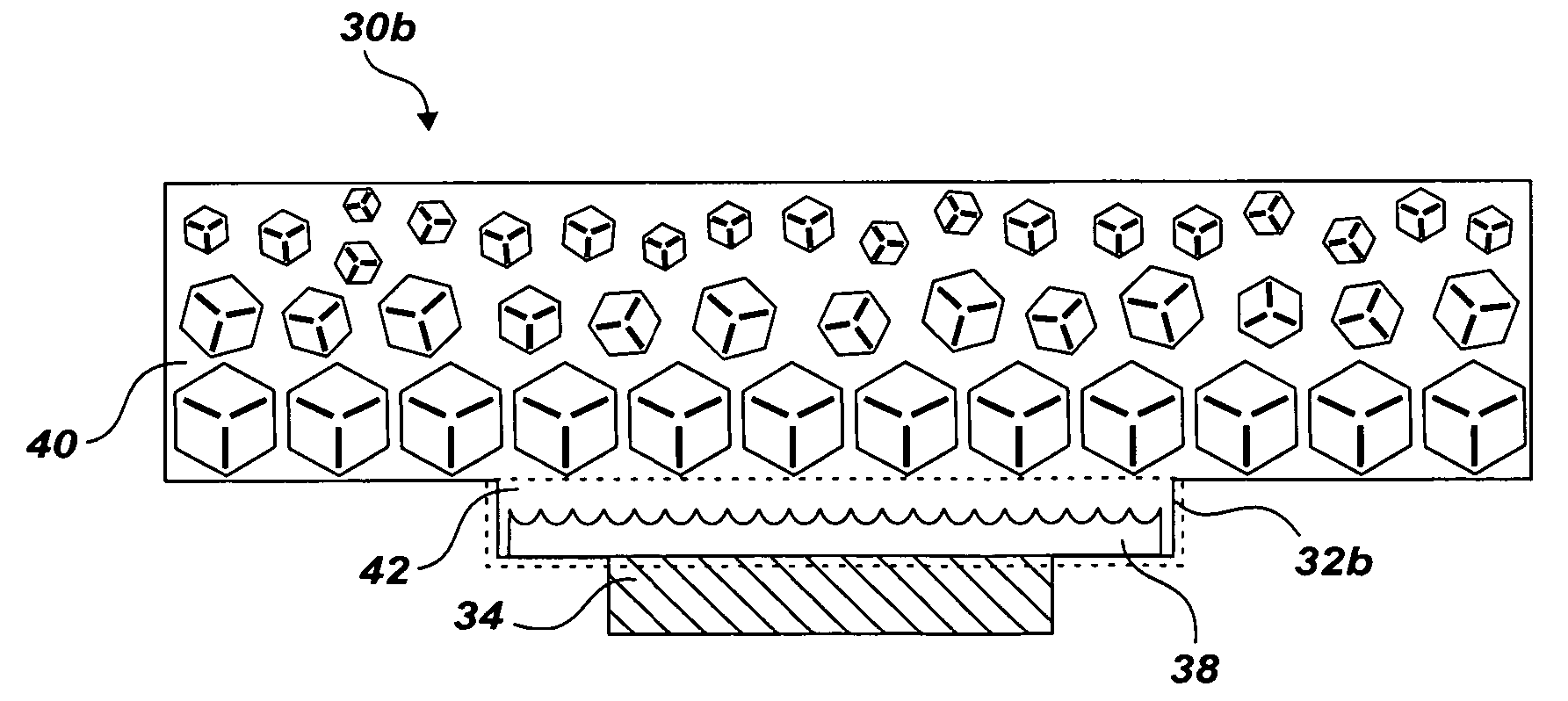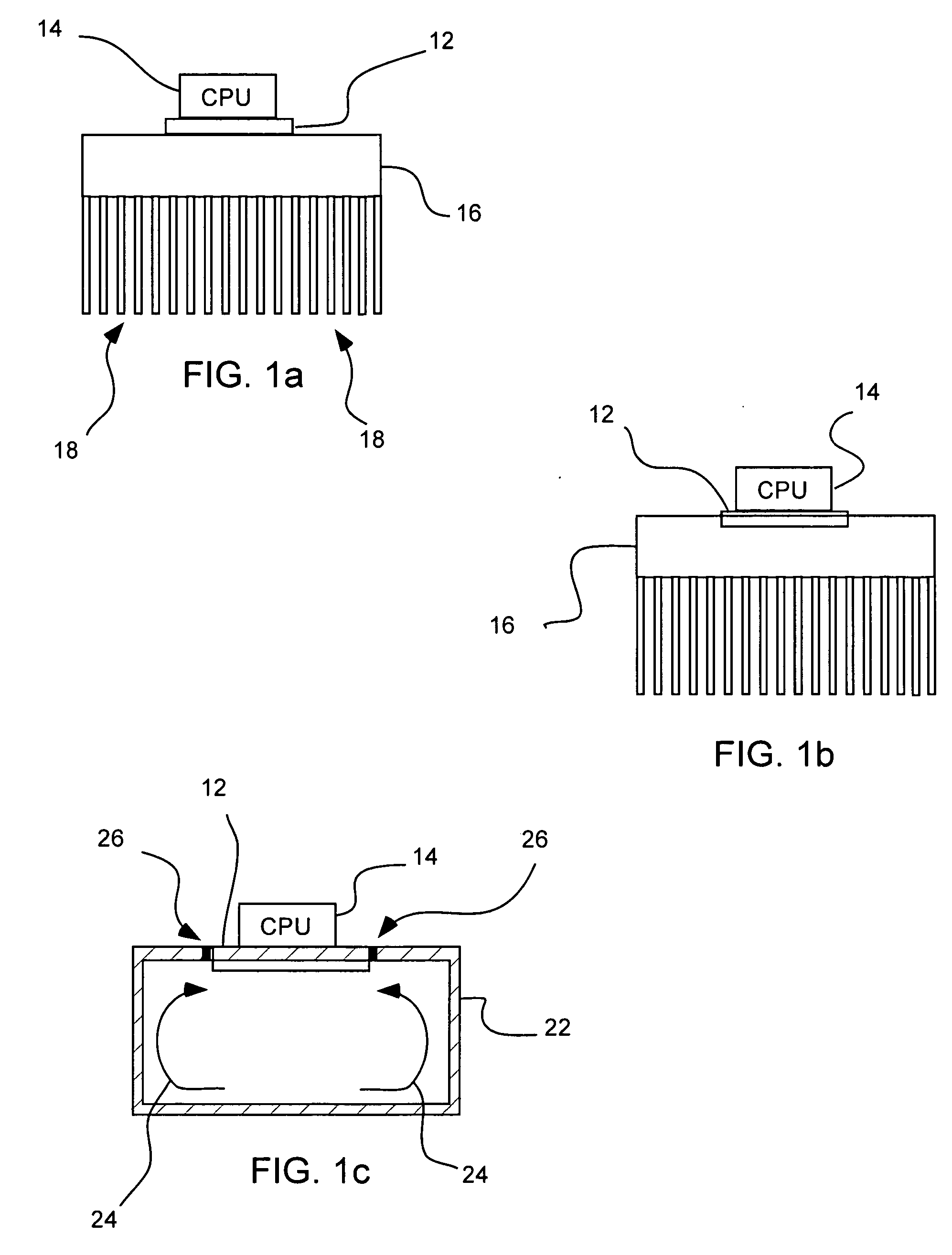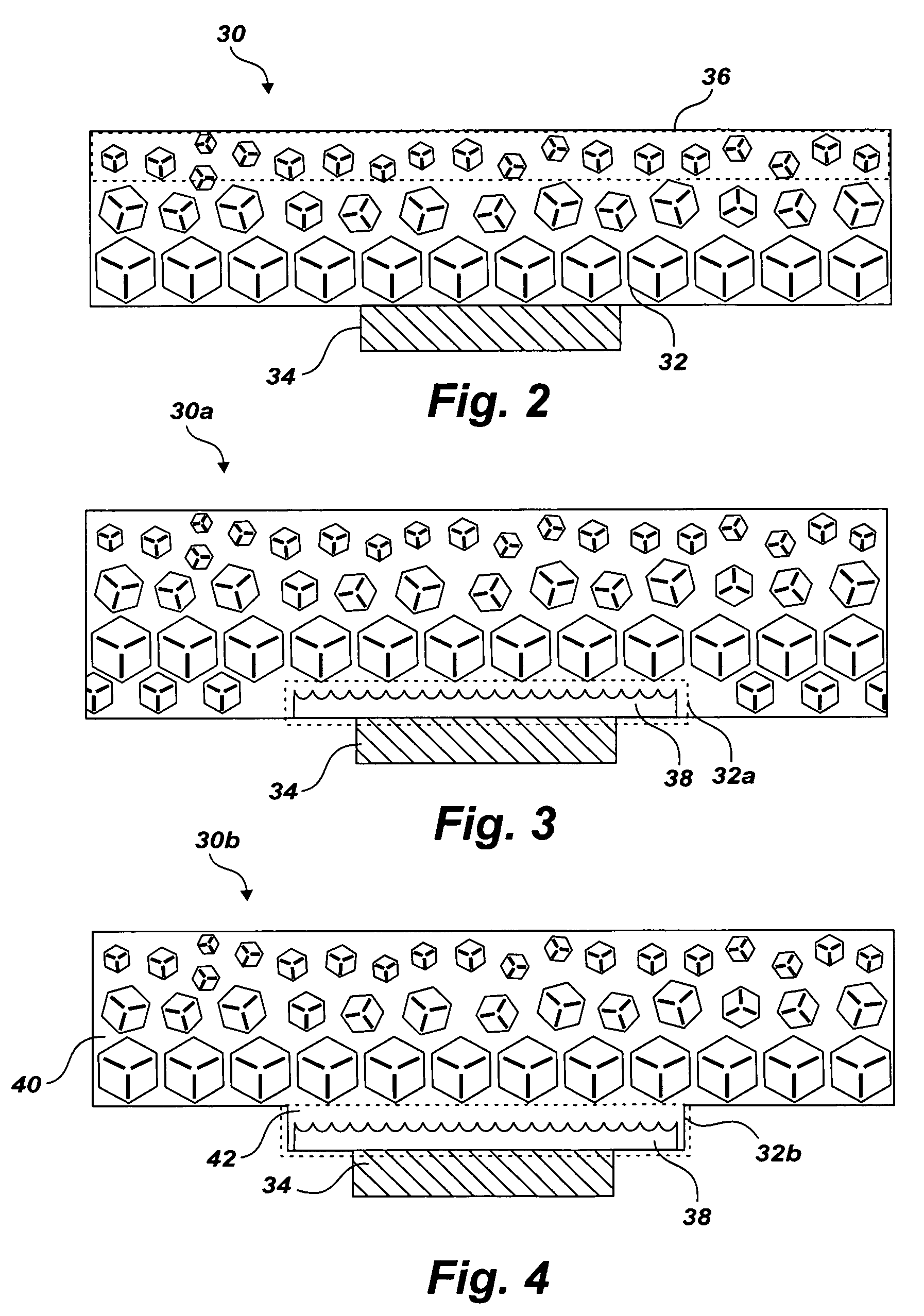Diamond composite heat spreader having thermal conductivity gradients and associated methods
a technology of thermal conductivity gradient and composite heat spreader, which is applied in the direction of cooling/ventilation/heating modification, semiconductor device details, semiconductor/solid-state device details, etc., can solve the problems of insufficient cooling of future generations of cpus, insufficient heat dissipation methods, etc., to achieve improved heat transfer control, variable thermal conductivity, and high thermal conductivity
- Summary
- Abstract
- Description
- Claims
- Application Information
AI Technical Summary
Benefits of technology
Problems solved by technology
Method used
Image
Examples
example 1
[0123] Diamond particles of 50 / 60 U.S. mesh are mixed with powdered copper to form a mixture. This mixture is then cold pressed to form a slug. A thin walled mold made of a refractory metal (e.g., Ti, Zr, W, Mo, and Ta) is provided. Ceramic particles (e.g., SiC, Si3N4, Al2O3) having a coarse grain size (e.g., 40 / 50 mesh) are first put in the mold and then the ceramic particles are covered with the diamond-copper slug. The sample assembly is then placed in a high-pressure cell and pressurize to over 5 GPa. The assembly is then heat charged to over 1200° C. by passing an electric current through a heating tube that surrounds the sample assembly. At this temperature and pressure, copper melts and is forced out from between the diamond particles. The liquid copper flows to the bottom of the mold containing the ceramic particles. The ceramic particles contain ample empty pores to receive the liquid copper. In this way the diamond grains are partially crushed and substantially fill in the...
example 2
[0127] A contact cavity in the form of a circular hole having a diameter of about 20 mm is formed into a flat base of an aluminum heat sink with radiating fins cooled by a fan. The contact cavity is coated with a thermal grease and includes a pin hole near the center of the cavity. The heat sink is heated to a temperature of about 200° C. to expand the contact cavity, after which a diamond composite heat spreader with a diameter of about 20 mm is inserted into the contact cavity. The pin hole ensures that no air is trapped between the heat spreader and heat sink and allows for excess thermal grease to be extruded therethrough. Upon cooling, the much larger thermal expansion contraction of the aluminum heat sink will result in the diamond composite heat spreader being firmly compressed into the contact cavity. The top surface of the diamond composite heat spreader is ground to remove any debris formed by the shrink fitting. The heat spreader is placed in contact with a chip or CPU an...
example 3
[0128] 50 / 60 U.S. mesh diamond particles were acid cleaned and loaded in a tatalum cup having a cylindrical shape. An OFHC copper disk was placed on top of the diamond particles. The charge was pressurized to 5.5 GPa in a 2000 ton cubic press that utilizes 6 anvils pressing toward a pyrophllite cube that contained the charge. Electrical current was passed through a graphite tube that surrounds the charge. At a temperature of 1150° C., molten copper was infiltrated through the diamond particles. Upon cooling and decompression, the charge was ground to remove the tantalum container and also the top and bottom surfaces of the diamond-copper composite. The final disk was 50.8 mm in diameter and 3 mm thick. The diamond content was approximately 90 vol %. Over 200 diamond composite heat spreaders were produced, resulting diamond-copper heat spreaders having a heat transfer rate of about 1.5-2.5 times that of pure copper.
PUM
 Login to View More
Login to View More Abstract
Description
Claims
Application Information
 Login to View More
Login to View More - R&D
- Intellectual Property
- Life Sciences
- Materials
- Tech Scout
- Unparalleled Data Quality
- Higher Quality Content
- 60% Fewer Hallucinations
Browse by: Latest US Patents, China's latest patents, Technical Efficacy Thesaurus, Application Domain, Technology Topic, Popular Technical Reports.
© 2025 PatSnap. All rights reserved.Legal|Privacy policy|Modern Slavery Act Transparency Statement|Sitemap|About US| Contact US: help@patsnap.com



